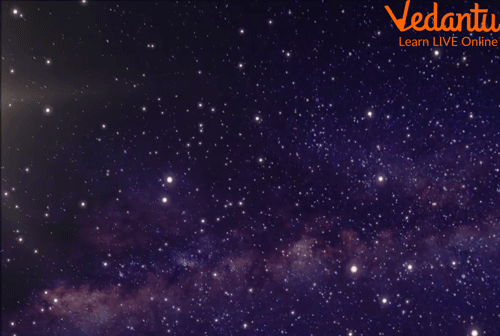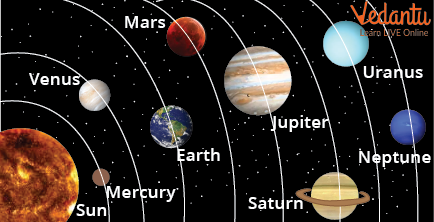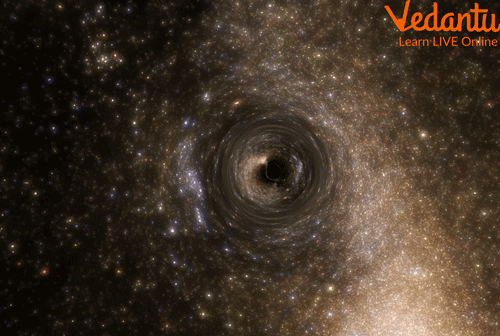




Some Space Facts for Kids
Have you ever wondered what is outside the Earth? Is Earth all there is? Are there other planets? Where is the sun found and the moon? All these questions bring you to the topic of outer space!
Outer Space or Space refers to more or less everything outside the Earth's Atmosphere. It begins at a point known as the Kármán Line (100km from Earth) and extends beyond it. Space is also scientifically known as the Universe. The universe contains Galaxies and these galaxies have solar systems, stars, planets, etc within them. Earth is a planet in a galaxy called The Milky Way. Here, we are going to explain space facts for kids, facts about space for kids, and space information for kids.
What is in Outer Space?
While it is easy to imagine outer space as a vast endless black area, space has many objects.

Stars in Space
Some objects found in outer space include -
Other planets such as Venus, Jupiter
Asteroids such as Ceres
Dwarf planets such as Pluto
Kuiper Belt Objects
Comets
Stars
Black Holes
Light in Space Facts
Outer Space is completely dark. It is pitch black. Why so? The reason for that is that there is no air in outer space. Since there is no air outside the Earth's Atmosphere there is no air to scatter sunlight thus no colours can be formed.
As there is only a vacuum (state of absence of air) in space, even sounds can’t travel. This means that once you reach the outside of the earth's atmosphere everything is completely silent. The lack of air is also one of the reasons why astronauts have to wear special space suits when in outer space.
Facts About Planets in Space
There are 8 planets in the Solar System. These planets include - Mercury, Venus, Earth, Mars, Jupiter, Saturn, Uranus, and Neptune. Here are some interesting facts about these planets

Planets in the Solar System
Mercury is the closest to the sun and has no atmosphere. Due to the lack of atmosphere, the temperature fluctuates immensely.
Venus is the hottest planet and revolves around the sun the fastest. It is also the slowest planet to rotate on its axis
Mars is the red planet. It is believed that life could exist on Mars. The asteroid belt is found between Jupiter and Mars.
Jupiter is the largest planet and is called a gas giant because it’s mainly made up of gas. It also has the highest number of moons
Saturn has rings surrounding it. These rings are made up of icy rocks
Uranus rotates on its side like a barrel
Neptune is considered to be a water planet that has constant storms. These storms have winds that blow 10 times stronger than the hurricanes on earth.
Information About Space
The Sun is the largest object in our solar system and it is a star. It’s almost 300,000 times the mass of the Earth.
Pluto was previously considered a planet but is now clubbed in with dwarf planets
Beyond Neptune, there is a doughnut-shaped belt of objects that revolve around the sun in an elliptical orbit. This belt is called the Kuiper Belt. It contains dwarf planets, asteroids, etc. They are commonly referred to as Kuiper Belt objects.
Comets mostly come from the Kuiper Belt or the Oort Cloud (which extends beyond Kuiper Belt) and revolve around the sun in an elliptical orbit. Halley's Comet is an example of one such comet.
As the Moon has no wind, tire tracks and footsteps left on the moon by astronauts and machines are still intact.
The Moon does not have any light of its own, it reflects the light of the Sun.
The Sun and Moon are responsible for tides on Earth.
Space has Black Holes that suck in light. They also have very strong gravitational fields.

A Black Hole
Everything in Space is constantly moving. The Sun revolves around the centre of the Milky Way as well.
Stars are billions of light years away from us.
A dog named Laika has been to space in a Russian spacecraft called Sputnik 2 in the year 1957!
Summary
Outer Space refers to everything outside the Earth's Atmosphere. It consists of planets, stars, asteroids, comets, black holes, galaxies, etc. The Earth is a part of the Solar System. The Solar System includes The Sun and the 8 planets. It also includes the asteroid belt and Kuiper Belt (which contains Dwarf Planets). As there is only a vacuum in space and no air, sound and light can’t travel. This means that outer space is completely dark and quiet. Thus, we have discussed light in space facts and information about space in detail.
FAQs on Amazing Facts about Space for Kids
1. What is outer space?
Outer space is everything that exists outside of our planet Earth's atmosphere. It is a vast, open area that begins about 100 km above the Earth. Space is filled with amazing objects like planets, stars, moons, and entire galaxies. Our Earth is just one small part of a huge galaxy called the Milky Way.
2. Why is space completely dark and silent?
Space is dark and silent because it is a vacuum, which means it is almost completely empty and has no air. On Earth, our air scatters sunlight, which makes the sky look blue. Without air in space, sunlight cannot scatter, so space appears black. Sound also needs something like air or water to travel, so the vacuum of space is completely quiet.
3. What are some amazing facts about the planets in our solar system?
Our solar system has many fascinating planets. Here are a few amazing facts about them:
- Venus is the hottest planet, even hotter than Mercury which is closer to the Sun.
- Jupiter is the largest planet, so big that all other planets in the solar system could fit inside it.
- Mars is known as the 'Red Planet' because of its reddish, dusty surface.
- Saturn is famous for the beautiful rings that surround it, which are made of ice and rock.
- Uranus is unique because it spins on its side, like a rolling barrel.
4. If the Sun is a star, why does it look so different from the stars we see at night?
The Sun looks different because it is the closest star to Earth. Because it's so close, it appears as a large, bright ball of light that gives us daylight and warmth. The other stars we see at night are incredibly far away, many light-years from us. Their great distance makes them look like tiny, twinkling points of light in the night sky, even though many are much larger than our Sun.
5. What is the difference between an asteroid and a comet?
Although both orbit the Sun, asteroids and comets are different. An asteroid is a large, rocky object, mostly found in the Asteroid Belt between Mars and Jupiter. A comet, on the other hand, is made of ice, dust, and rock. When a comet gets close to the Sun, the ice heats up and creates a glowing cloud and a long tail that can be seen from Earth.
6. What is a black hole?
A black hole is an area in space where gravity is so strong that nothing, not even light, can escape from it. They are formed when a very massive star collapses in on itself. Because they don't reflect any light, we can't see them directly. Scientists know they are there by observing the effect of their powerful gravity on nearby stars and gas.
7. Was an animal ever sent to space?
Yes, animals have been to space! The most famous one was a dog named Laika. In 1957, she became one of the first animals to orbit the Earth aboard a Russian spacecraft called Sputnik 2. Her journey helped scientists understand if humans could survive in space.









